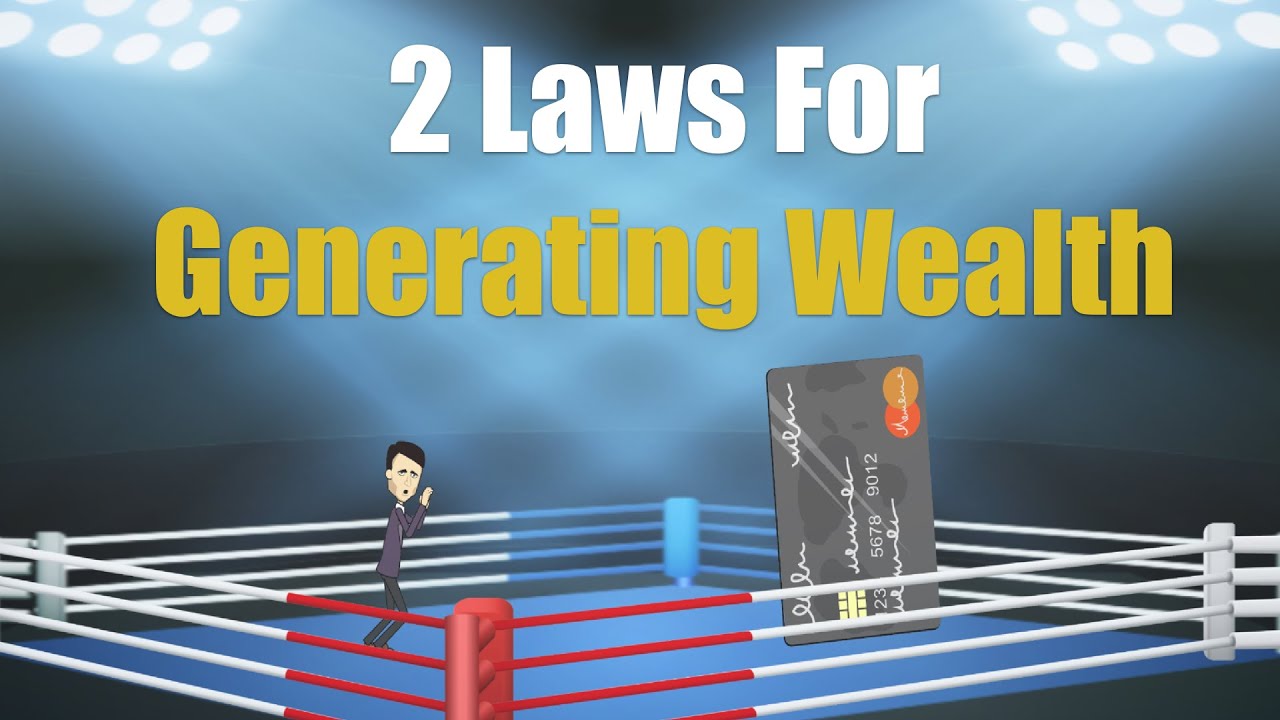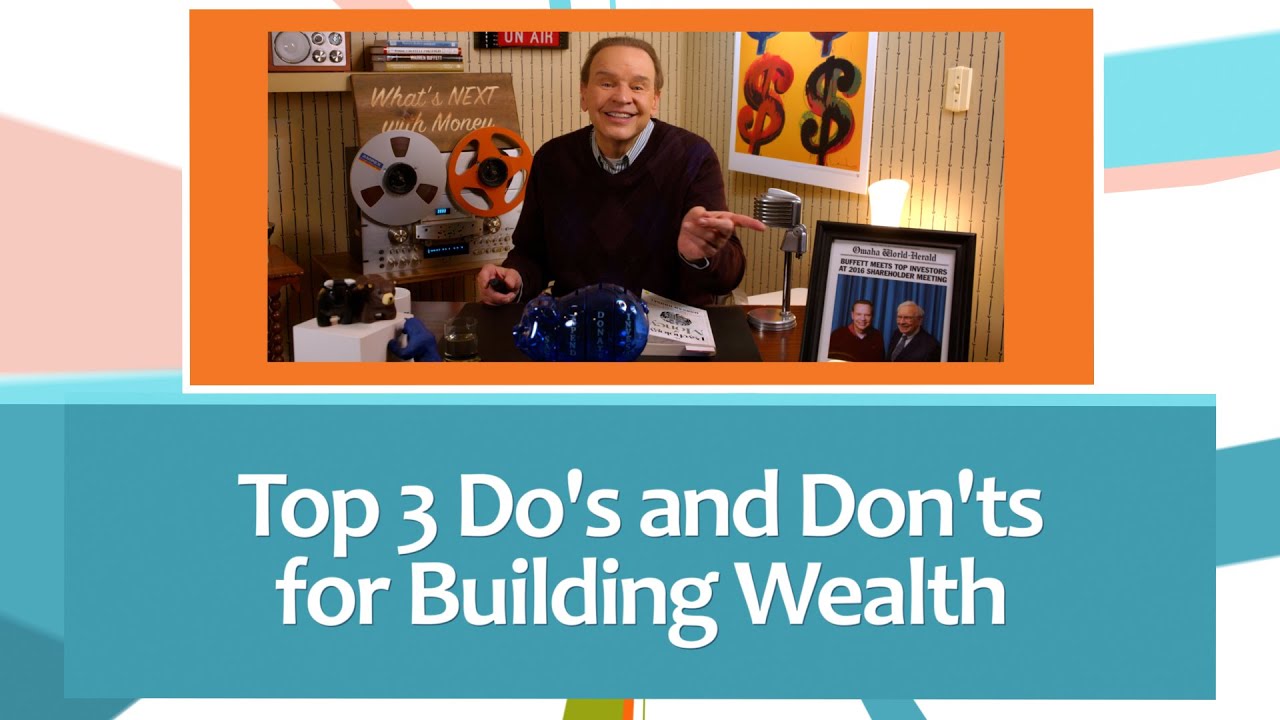Tag: generating wealth

2 Laws for Generating Wealth
Jason 0 Comments Retire Wealthy
Any successful plan to generate and sustain
sufficient wealth must incorporate two very basic rules: 1) Generate Investible Savings. The first step to unlock the path to building
tremendous wealth is not about investing at all. It is about generating Investable assets. For most people this begins by terminating
any expensive debt such as credit card or high interest debt. The reason being that expensive debt increases
one’s expenses and eats into investable resources. Second step for most people is redefining
certain parts of their remaining income as compulsory payments that must be done. That payment is, in fact, the first step of
savings for investing. The third step for most people is to invest
time and entrepreneurial energy to increase their gross income. Getting a better job, a promotion, a new skill
or starting a business that can generate profits disconnected from your immediate personal
labor resources. The fourth step would be establishing some
kind of an emergency fund and getting sufficient insurance to cover yourself against unpredicted
expenses. When the four steps are done, you can start
generating sufficient investable assets that can be put to work growing over a minimal
period of five years.
When this is done, you can proceed to the
next rule. 2) Invest investable savings into exponentially
growing assets, growing for many years while limiting the taxes you pay. Once you generate investable assets and are
ready to put them to work, comes the next tough question: Where should I deploy my investable
assets to maximize my investment and to generate more wealth? You should know that any and all investable
assets you will ever encounter can belong to one or another of these two categories:
Exponentially Growing Assets or Regular Growth Assets.
If you ever hope to generate sufficient wealth
from your investable assets, you must learn how to separate your exponential growing assets
from your regular growth assets and then make sure you are sufficiently exposed to the exponentially
growing asset class. Exponentially growing assets are a rare creature
few understand, even among seasoned investors. There is a set of strict rules to become eligible
for the coveted title: A) At their very core, they must yield very
high returns on internally invested resources and expenses – such as inventory, labor, plant
& factory or R&D; What sets exponentially growing assets apart
from any and all investable assets is their ability to make a large profit on a small
base of required resources. The more expenses and investments one needs
to make a profit, the less profit is left to increase the value of the asset itself. B) They must have sufficiently large market opportunities
ahead of them to enable many years of sales growth displaying high returns on invested
resources; While many possible assets can generate high
rate of return, exponentially growing assets are not a one-off occurrence or limited activity
and must be able to maintain their course of growth over many years to build sufficient
appreciation for their owners.

C) They must provide extensive internal reinvestment
opportunities to use profits at similarly high returns To really become an exponentially growing
asset capable of building imaginary amounts of wealth, the asset must provide managers
the ability to use the rivers of cash generated regularly from the asset in a similar high
rate of return. When these criteria aren’t met, owners soon
realize the resulting rivers of profits do not grow at a high rate and the growth in
wealth soon slows down due to the ever-growing profits invested in lower rate growing assets.
D) They must be led by honest, high integrity,
talented managers, who are actually risking their own wealth alongside their investors. For these executives, a small increase in
the share price will generate much greater wealth than any increase to their paycheck. Executives of public companies have the ability
to loot the company’s coffers or engage in wealth destruction in an infinity of ways. To avoid that, check to see how large your
CEO’s stake in the company stock is before choosing any investment.
As long as the company still embodies the
4 rules that we covered here, you stay invested; this is the one last requirement when investing
in exponentially growing assets. ALL exponentially growing assets see their
stock price cut in half several times during the decades, usually due to different parameters
that don’t reflect the actual company value. Holding these assets through turbulences,
and even adding to them, requires temperament and familiar understanding of the business,
which results in the conviction to stay the course..

Top 3 Do’s and Don’ts for Building Wealth
Jason 0 Comments Retire Wealthy
[Music] welcome in coming up on today's program top three do's and don'ts for Building Wealth I hear folks say I'm good at the don'ts of Building Wealth or the dues don't they require money don't they wealth how to get it how to keep it and how to avoid the trip wires that could blow it when it comes to wealth what are you experiencing with the do's and don'ts we've had many viewers ask about that let us know what you think in the comments section you're watching what's next with money a program that holds a promise of second chances for growth and financial empowerment with wealth three critical principles and advice saving for wealth how to keep wealth what not to do when you're on your way to wealth but also when you are wealthy we're going to reference a lot of great Insight from the psychology of money book by Morgan Hansel and have a link to it in the comments section now we're talking about that top three do's and don'ts for Building Wealth here's number one you saving your way to wealth this is how to get it Building Wealth has little to do with your income or investment returns but it's got a lot to do with your saving rate Morgan talks about that savings rate wealth is the accumulated leftovers after you spend what you take in now this is actually pretty easy to control if you latch onto this idea learning to be happy with less money creates a gap between what you have and what you want it's kind of like that Gap created if you've got a growing paycheck your savings goes further and can get bigger as that income Rises but savings without a spending goal attached gives you options and flexibility now folks I want to actually repeat this this is the core idea of wealth building savings without a spending goal attached gives you options and flexibility this is the concept of saving just to save but you get time to think and set your actions and intentions on your own terms a great writer and business advisor Dan Sullivan who wrote the Strategic coach calls this a walk away fund and we've talked about this in some of our other videos this is if you've got enough savings you've had it with your job or there's something unethical happening there you can walk away and do okay and reset your career path by Saving in this manner your financial Independence grows and folks I have personally lived this flexibility gives you the ability to wait for good opportunities in your career small business and especially your Investments the hardest Financial skill is getting the goal posts to stop moving according to Morgan it gets to the classic case of more versus enough and a quick example the real estate business my wife and I started we could have kept going to develop and acquire more properties but at some point we stopped we met our goals and we paid our debts early and completely all out of rants with no outside partners yet we're still actively investing in other forms of assets and Equity markets but I had to stop and think who or what was I trying to impress if I kept making the real estate business bigger would it be other people who don't know me or don't care you know we reached a Target that was very good and it's still growing in value and wealth we did not need to move the goal posts and we didn't generating wealth is often linked to generating Envy they seem like they're on Parallel slopes on a graph in other words it's a form of social comparison and we're talking about the top three do's and don'ts for building well here's number two getting wealthy and staying wealthy this is how to keep it bottom line strive to consistently not screw up we have to hold in our minds and our attitude some combination of frugality and paranoia now this is a very unique tension but it's very profitable with frugality we live below our means with paranoia we're questioning am I doing the right thing and am I doing that right thing well but by keeping on learning and getting professional advice we can do this so getting money is one thing keeping it is another getting money requires taking risks being optimistic putting yourself out there keeping money is kind of the opposite of taking risks it requires humility back to that frugality and it requires a little bit of fear paranoia the idea that what you have made and achieved can be taken away and that some of your financial investing success and I would add real estate success you've got to admit some of this is attributable to luck the time you're in the markets or you're buying them I could list probably five examples of luck during real estate and other types of investing bottom line here past success can't be relied upon to be repeated indefinitely external events markets family needs change and we change the ability to stick around for a long time without wiping out or being forced to give up staying in the game not capitulating is financial endurance it's a key to Building Wealth powering through recessions and downturns smartly we have many videos that help you do this on our what's next with money Channel swinging for the fences and investing for home runs or grand slams can put your portfolio at risk so strive with investing to hit singles and doubles and obviously don't put all your eggs in one basket a friend of mine years ago said if you had an investment if it doubles sell half and this is really about stocks if it triples sell it all it's pretty good advice I don't always follow that some to my regret we have another set of videos they're actually too called investing in what you know where I talk about letting your winners run compounding only works if you can give assets years and years to grow Warren Buffett we've got several of his books here hasn't always been one of the richest men in the world as of this taping this guy is age 92.

Warren Buffett didn't even become a billionaire until he was 50 years old in fact this blew my mind 99 of Warren Buffett's net worth was earned after that 50th birthday I have seen this pattern and dimension of net worth growth first hand and we've got a fantastic video called net worth equals net wealth so if you're getting value from this video be sure to hit that subscribe button and the like button and share it with folks it's free and non-commercial we're talking about the top three do's and don'ts for Building Wealth and here is number three wealth what not to do this is avoiding the tripwires Warren Buffett's what not to-do list is really interesting he's not loaded with debt no he didn't panic and sell during the 15 recessions he's lived through as an active investor he does not jump into excessive Trading he's generally very tax sensitive and he pays for good advice to help you he's kept a sterling business reputation with his ethics he's not locked into one strategy world view or trend he did not use other people's money but he does use Insurance floats and we explained that in some of our videos how Berkshire Hathaway is structured he did not quit he kept going he is still going and I take great excitement from this as an investor small business owner and media influencer I can keep going you can keep going Warren Buffett and his partner Charlie Munger have stayed wealthy they had an edge and survived to stay wealthy requires that margin of safety he talks about so much reserves and to not put all of your assets at Great risk think about this concept and it comes from Morgan's psychology of money book that having cash buckets to prevent you from selling during a bear Market or a downturn if you need to pull money for your household or in retirement you take it out of the cash bucket you don't sell stocks or mutual funds when when they're under pressure or low and you might think wait a minute I'm only earning an interest rate of one or two percent on that cash actually you have avoided a loser return you've avoided much more negativity by having not to have to sell that stock at a low price you didn't sell equities at low prices so that return on that cash is higher than one or two percent now what about compounding compounding means good returns uninterrupted over long periods of time and that's what Berkshire Hathaway does now returns won't be up every year only Bernie Madoff claimed that and you know how that turned out so be sure to hit that subscribe and like button and don't forget to share new episodes of what's next with money or posted on Thursdays I'm Bretton Eiser looking to see you next time on what's next with money [Music] thank you
Read More
Recent Comments